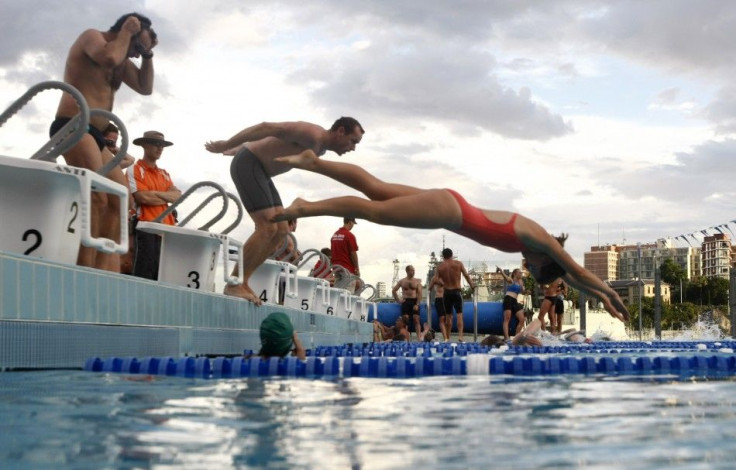Swimming Lowers Blood Pressure in Older Adults

NEW YORK (Reuters Health) - Many older adults like to take a dip a pool, and now a small study suggests it can be good for their blood pressure.
Researchers found that among 43 older men and women, those who started swimming a few times a week lowered their systolic blood pressure -- the top number in a blood pressure reading.
On average, the swimmers started the study with a systolic blood pressure of 131 millimeters of mercury (mm Hg). Three months later, it was 122 mm Hg.
Normal blood pressure is defined as an average reading no higher than 120/80 mm Hg. Readings of 140/90 or higher are considered high blood pressure, and anything in between is considered pre-hypertension.
Swimming is often promoted as a good way for older people to exercise, since it's easy on the joints and it's not likely to cause overheating. And many follow that advice: after walking, swimming is the second-most popular form of exercise among the older set.
But there's been little research into the health benefits of swimming -- though a number of studies have suggested that it's as safe for older adults as walking and bicycling, said Hirofumi Tanaka, senior researcher on the new study.
Published in the American Journal of Cardiology, the research appears to be the first to demonstrate that swimming can improve older adults' blood vessel function and curb their blood pressure.
Swimming is a very attractive form of exercise, Tanaka, a researcher at the University of Texas at Austin, told Reuters Health in an email.
It's easily accessible and inexpensive, Tanaka noted. And because it does not involve bearing of body weight, due to the buoyancy of water, it is friendly to knee and ankle joints.
The study included 43 adults, with an average age of 60, who had high blood pressure or pre-hypertension but were otherwise healthy.
The researchers randomly assigned them to either have supervised swimming sessions or learn relaxation exercises. Over 12 weeks, the swimmers got in the pool three or four times a week, gradually working their way up to 45 minutes of swimming at a time.
By the end of the study, the swimmers had shaved an average of nine points from their systolic blood pressure. In contrast, that number did not budge in the relaxation group.
The picture was similar when the researchers had the study participants wear portable monitors that tracked their blood pressure over 24 hours. On average, the swimming group had a 24-hour systolic blood pressure of 119 mm Hg -- down from 128 mm Hg at the study's start.
Tanaka's team also used ultrasound tests to measure how well participants' blood vessels were dilating in response to blood flow. Again, they found improvements in the swimming group, but not in the relaxation group.
The study was small, and it's not clear whether the blood pressure reduction lasts -- or whether it translates into a lower risk of heart attack or stroke down the line.
But the results line up with what experts already recommend for older adults' heart health: get regular moderate exercise, along with a healthy diet.
Tanaka said that as long as an older adult has gotten the OK to exercise moderately, swimming should be a safe activity. But if you're sedentary, check with your doctor before becoming newly active.
There was a time when swimming was considered potentially risky, Tanaka noted, because being in cold water elicits cardiovascular changes.
But most studies have indicated that bobbing in the waters of your local pool would be as safe as a walk around the neighborhood.
SOURCE: bit.ly/xtT6VI American Journal of Cardiology, online January 16, 2012.
© Copyright Thomson Reuters 2024. All rights reserved.






















